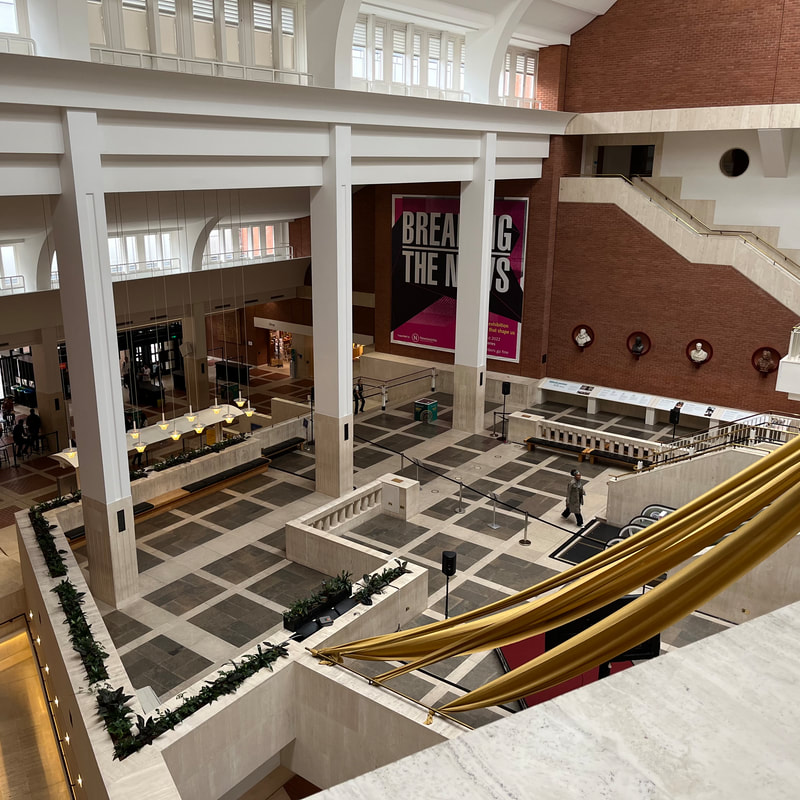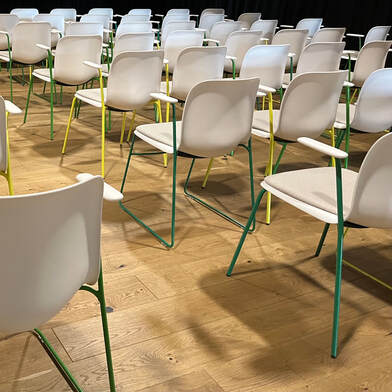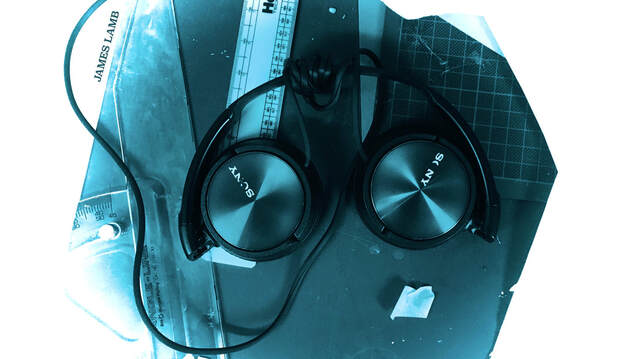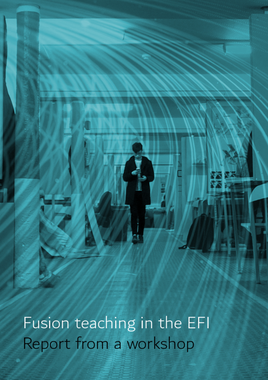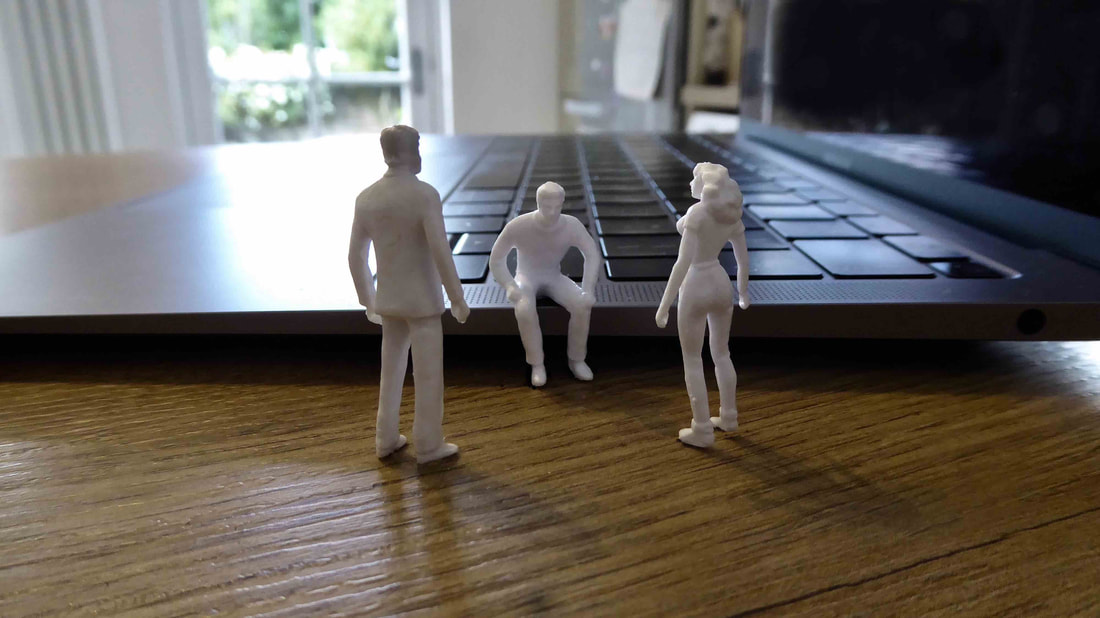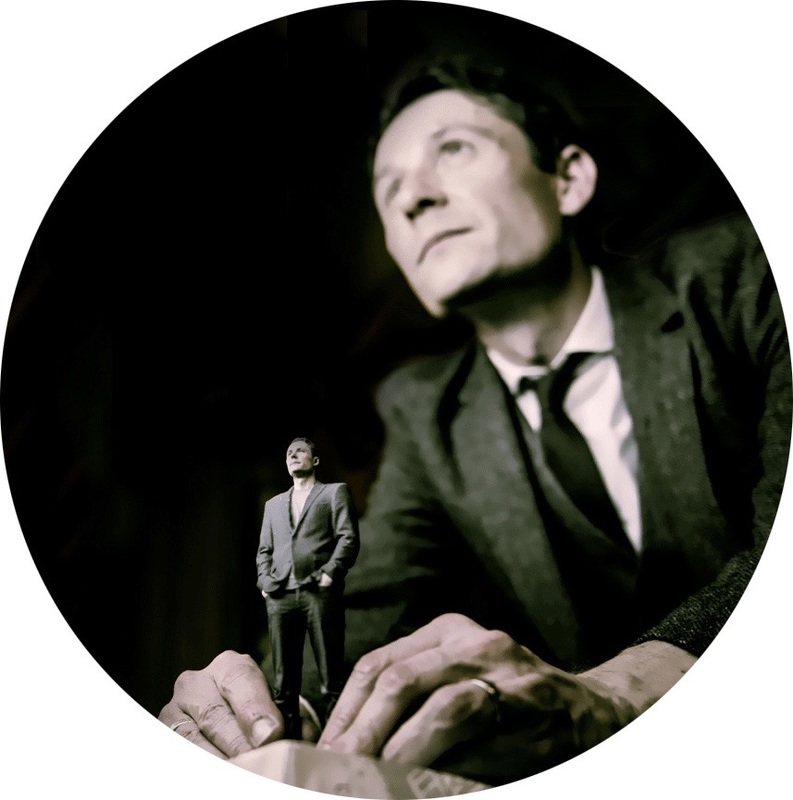|
This morning I'll present my second paper at Carnet 2022 Conference. Yesterday afternoon I discussed the conceptual compatibility of sociomateriality and postdigital thinking. Today I'll discuss how I draw on a number of key postdigital propositions to inform my research around learning spaces. The 'reimagining' within my paper title refers to my argument that, when thinking about postdigital learning spaces, we need to consider questions of accessibility and equality in order to create convivial and sustainable learning spaces. Slides below.
0 Comments
Over the last few days I've been participating in the Carnet 2022 Conference in Šibenika, Croatia (and online in my case). This afternoon I contributed a presentation that will feed into a book chapter I'm writing, about the conceptual and methodological relationship between sociomateriality and postdigital thinking. The overarching question of the book and paper is whether, in light of some key common conceptual ground, postdigital does anything beyond the work already performed by theories of sociomateriality. I think perhaps, from a research perspective, postdigital thinking brings something distinct by being more resolute in recognising that digital technologies are woven into the fabric of our everyday educational surroundings and practices. More in the slides below.
For the Introduction to Social Research Methods course (part of the MSc in Digital Education) I was asked to write about a method that I use in my own research. I chose to describe some of the ways that sound has helped me to ask questions about educational spaces and practices. And rather than writing a piece, I decided it would be record myself talking on the subject.
The piece begins with me inviting students to participate in a version of the 'ear cleaning' activity developed by R Murray Schafer, who was part of the World Soundscape Project at Simon Fraser University. From there I go on to propose a definition of 'sonic method' (02:15 minutes in), how sound has gradually become more popular within social and education research (05:12), three examples of how sound has featured in my own digital education research (09:35), and the scope and subjectivities of working with sound as a method (16:30).
One of the messages I convey in the recording is that while sound offers something distinct as an approach to inquiry, this will most likely happen in concert with more traditional methods, especially those concerned with what we see. And I don't expect that the piece will suddenly lead to a whole series of student dissertations that depend on sonic methods. Nevertheless, I'm convinced that sonic materials and methods provide powerful ways of enabling us to critically tune into our educational surroundings. A recently-released article, where I argue for the value of using music playlists in education research. At time of writing it has 558 downloads, which perhaps means it sneaks into the Top 30, still some way behind Now That's What I Call Social Research and The Very Best of Qualitative Inquiry.
The article is part of a forthcoming special issue of Postdigital Science and Education on the subject of postdigital sound. As well as making the case for sound in education research more generally, I discuss my experience of collaborating with students on the creation of collaborative music playlists. Alongside helping to establish rapport and trust, this approach helped to provoke insights into the learning spaces and practices of these Architecture and History undergraduates. QR codes in the article link to the playlists. When I was toying with the idea of writing this up as a method, I did wonder whether this might seem especially niche. But then, my ethnographic observation of student practices and spaces had made clear the recurring presence of streamed music. And so I in the article argue that the music playlist works as an ethnographic artefact, offering us insights into educational practices, communities and environments.
The Edinburgh Futures Institute brings together people, data and disciplines in the creative exploration of ideas and live issues. Our first programmes launched in September 2022 and our building, which is converting part of the former Edinburgh Royal Infirmary, is due to open in Spring 2023. My contribution to this work has included co designing one of the new Masters programmes (MSc in Education Futures), sitting on advisory groups around learning and technology, and being part of an end-user group with a remit for creating fusion teaching spaces. These different strands of activity came together in May when I took part in a ‘placemaking’ field trip to London, alongside a group of Edinburgh Futures Institute colleagues.
Across two days we visited a range of organisations (education, research, commercial) and spoke with different people as we considered ideas, environments and practices that could shape our own work and surroundings within EFI. As a varied group of academic and professional services staff we brought a range of interests to each visit, for instance around teaching, buildings, facilities, partnerships and beyond. I learned a good deal from each visit, but also from being alongside a more varied group of colleagues than I would normal work alongside.
Among other stops on our fast-paced placemaking tour, we took in the British Library, Alan Turing Institute, Central St Martins College, Digital Catapult, Francis Crick Institute, Gate One, Plexal East and UCL Business School. We also wandered through the public realm spaces of Coal Drops Yard and Granary Square, and paused to catch our breath and collect our thoughts in Spiritland. As I went along I recorded the sights and sounds of these different settings and brought them together in a short video as a kind of visual-and-aural reminder of each place.
Here are some of the ideas and questions that I took away from the placemaking field trip. I’m sharing these as a note-to-self, but also because I think these could be talking points on the Learning Spaces and Digital Technologies course I’m teaching this semester.
One setting, many spaces This was something that we already had in mind for our new building the EFI, but there was a clear recognition that the design of a single building (or floor) could usefully support a range of different activities, working practices and personal preferences. And so staff or students can move between open plan areas, quiet corners, meeting pods, lounge areas, kitchens and so on, depending on their mood or the task in hand. Whereas in the past the design and layout of a building might have been used to hierarchically tell individuals where they would work, there seemed to be considerably more freedom of choice and movement in these emergent environments (which isn’t to say that workplace power dynamics are necessarily waived away through comfy bench seating or a coffee machine). …but no offices Looking across my photographs from the visit provides a clear indication that that the individual office has been squeezed out in the design of these new working and studying environments. Again in line with what will happen in our own EFI space, the traditional idea of the academic having their own office is seemingly out of step with contemporary expectations or working practices. Keeping things simple? For all that we visited a number of sophisticated and hip working environments (ping pong tables, bowls of fruit, baristas) it was at the British Library where we saw a clamour for space. Well before the doors opened, there was a long line of students queuing to guarantee a seat and desk for their writing, reading or reflection. It wouldn’t be sensible to conclude anything on this snapshot (and it doesn’t make much sense to compare a commercial start-up with a study setting), but I still wonder if there’s something in here about not over-complicating things. Making the workplace attractive after Covid It might have been the timing of our visit (towards the end of the week, reasonably soon after Covid had dissipated) however several of the spaces we visited felt very quiet for a working day. This was despite having what looked to have really pleasant working environments. Again, it is isn’t possible to draw assumptions based upon a few quick glimpses, but - and this is relevant to the building we are creating at EFI - how do we incentivise being physically present on campus when staff and students know from the experience of lockdown that it might be cheaper and more convenient to work from home. Will the promise of nice surroundings trump the time and cost of travelling to the city centre? And what happens to workplace synergies when nobody else is around? Access and security How we do strike the balance between making our physical spaces open to different publics, while at the same time ensuring the safety of students and staff who work there? Based upon our placemaking visit, there’s much to be said for having security staff who are visible but also friendly. It’s possible be exacting and welcoming (and a particular nod to the member of staff at Central St Martin’s College who patiently and good humouredly helped a long line of visiting staff to negotiate the security turnstiles). Finally, how does 'place' work in fusion? Our programmes in EFI are distinct for being designed as fusion-first. That is, a single course can be simultaneously studied on site and online. This calls on us to think really careful about how the built environment can structure in equity of experience for those students who are situated in a location away from the University. Are there ways that online students can experience and feel actively present in the physical buildings? How do we nurture natural connections between students attending in different modes? What do our classrooms (and corridors and cafes?) need to do in order that we can equally see and hear students who are attending the University online? Difficult questions, but crucial points to consider when placemaking for an institute that advocates fusion teaching and learning. There's a fascinating relationship between sound and those spaces learning happens. Sound helps to expose and enact power dynamics within the classroom. It can help to reveal pedagogical and epistemological assumptions within particular courses. It can be used to positively nurture the conditions that are conducive to learning, but can equally disrupt concentration and be a cause of distraction and procrastination. Sonic methods were a key part of my PhD as I explored the sociomateriality of the architecture studio and history classroom (Lamb 2021). Before that, along with my colleagues Sian Bayne and Michael Gallagher, we used sound as a way of exploring how online postgraduate students conceptualised their university (Bayne, Gallagher & Lamb 2013), and also how they used sound to negotiate space for learning away from the campus (Gallagher, Lamb & Bayne 2016). Meanwhile, I am currently writing an article where I argue that music playlists exist as ethnographic artefacts which can help us to explore the learning spaces and practices of students. Related to this, I also oversee this Elektronisches Lernen Muzik project where, to date, 25 teachers, researchers and students have shared playlists of music (with accompanying 'liner notes' and 'cover artwork') that accompany or inspire their educational activity. I discussed these and other pieces of work in a recent workshop for the Learning Environments group of the New Zealand Association for Research in Education (NZARE). The session was hosted by Lucila Carvalho and Jenny Green (Massey University) whom I worked with on this Special Issue exploring the postdigital learning spaces of higher education. You can watch a recording of the workshop here. My overall aim for the session was to make the case that sonic methods and material provide us with ways of critically tuning into our educational surroundings. To do this I discussed the following approaches: Field recordings and sound maps Journaling and sonic elicitation Music playlists as ethnographic artefacts There are many others approaches to critically exploring learning spaces - interviews, journaling, observation, visual methods, to name a few - however sound, as I argue in the workshop and elsewhere, does offer something different as we try and makes sense of our educational surroundings. References
This time last year, Martin Hawksey and I were putting together an online workshop that would explore fusion teaching (elsewhere called 'hybrid and 'hyflex') in the context of the Edinburgh Futures Institute. Among other things, fusion represents a way of thinking about pedagogy which avoids necessarily privileging either being on campus or online, but rather aspires to these modes of engagement as co-existing and working in complement. I think it's fair to say that, for the most part, these pedagogical approaches have emerged in response to the imposed conditions of Covid-19 and the uncertainty of accessing the physical spaces of the campus. The situation within EFI is different because, while our thinking has certainly been shaped by experiences over the last two years, it was always the case that our programmes would be simultaneously delivered on site and online. Going back several years, we have been building an entirely new portfolio of postgraduate programmes, rather than converting existing teaching into hybrid provision. At the same time, we have had the opportunity to inform the design of our teaching spaces, achieved through dialogue with architects and others responsible for reimagining a former Victorian hospital into our fusion home. We have therefore been fortunate in having a high degree of influence over how our teaching spaces and practices might look, informed for instance by ideas that emerged from our workshop where we speculatively considered the configuration of space, technology and pedagogy. As a group of educational developers, learning technologists, lecturers, online students and researchers, we explored how fusion might work in four different learning contexts: an ideation studio, a flexible teaching space, a lecture space, and a social area such as a cafe. The ideas that emerged from our conversations were distilled into a series of philosophical propositions that provide ways of thinking about fusion pedagogy, alongside practical suggestions for how some of these ideas might be realised. In setting the tone for the workshop, we worked hard to encourage participants to be creative in their suggestions, rather than feeling constrained by cost, class sizes and other issues. Much better, we decided, to come up with brilliant ideas that might need to be adapted or put on ice, than cautiously deferring to what we already do or know. This is reflected in the report that followed our workshop, which was written with the aim of informing thinking and suggesting possibilities around fusion spaces and pedagogies, rather than being a 'How to...' practical guide, or a set of 'Best practice...' pointers. After all, fusion - and probably any - teaching is contingent on the particular context, including the subject being studied, the intended audience, and other conditions besides. Since sharing the report, I've had the opportunity to test out some of the propositions and practical ideas as I taught a course, The Future of Learning Organisations, in fusion mode earlier this semester. I'm slowly writing up some reflections on the experience, however here meanwhile is the report that emerged from the workshop that Martin Hawksey and I put together. Perhaps it might inform your thinking around how we can develop pedagogies to equally support, and combine, on site and online engagement?
Announcing the publication of our Special Issue, which explores the Postdigital Learning Spaces of Higher Education. The ‘our’ is myself, Lucila Carvalho, Michel Gallagher and Jeremy Knox. We’ve been working on this since summer 2020 therefore it’s nice to see the editorial and articles now available. We’ve been supported by Peter Jandrić who, as Editor-in-Chief for Postdigital Science and Education, has done a great job in keeping us on track, as well as smoothing the way for articles to be published soon after they’ve been completed.
Guest editing a Special Issue has been a new and positive experience for me. I’ve previously contributed to these publications from the author’s perspective, however it has been interesting to instead be involved in conceiving the ambition, writing the call for papers, reviewing manuscripts, liaising with authors, and then finally penning the editorial. I’ve been particularly helped in this by Lucila Carvalho, with our 7am Edinburgh/7pm Auckland meetings being a valuable source of guidance and sense-checking. Alongside Lucila, and as the editorial notes, Peter Goodyear, Lesley Gourlay and Jos Boys have done a great deal to establish higher education learning space as a site of critical research, therefore it has been nice to work with these researchers as colleagues, rather than simply referencing their work as before. In addition, Kati Fargo Ahern and Stephanie Wilson have contributed pieces that align with my interest in sound, while Magda Pischetola, and Dewa Wardak, Carmen Vallis and Peter Bryant have explored the sociomateriality of learning spaces. And I’ve been newly introduced to Jenny Green and Annelies Raes whose work has given me a wider and richer perspective on the relationship between digital technologies and learning spaces. Across the nine articles collected together within our Special Issue, the authors offer a range of philosophical and empirical takes on contemporary learning spaces and practices at a point when digital technologies have become woven through the fabric of higher education and society. And of course, as this Special Issue has taken shape, the relationship between technology and space and teaching has particularly come to the fore amid the imposed conditions of lockdown and the inaccessibility of many conventional classrooms. In our editorial we argue that, for all the challenges and disruption that Covid-19 has brought, it has also provoked a moment of reckoning where we have been able stop and think about the kind of university we desire. The different articles in this Special Issue suggest what this might be, and suggest how we might begin to realise it through the configuration of space, pedagogy and technology.
At a time of considerable social, technological and ecological change, there is a need to anticipate and critically examine the future make-up of educational places, practices and people. This is the purpose of The Future of Learning Organisations, a 10-credit, level 11 postgraduate course, within the Edinburgh Futures Institute. Across 5 weeks, and working on campus or online, we speculatively consider the future function of the educator. We ask whether climate crisis and the threat of further global pandemics calls for different understandings of the classroom and campus. We examine how algorithmic culture and the design of code affect authorship and assessment. Or at least, that is what the course will do after I have put the final pieces in place over the coming weeks, before teaching it as a pilot for the first time early in 2022.
The course is part of the MSc in Education Futures that I have been developing with my colleague Jen Ross over the last 2 years. Jen has written separately about the programme in this blog post, and fuller detail (including how to apply) can be found here. Beyond the critical questions we will be asking on the course, the Future of Learning Organisations is also interesting for the modes of engagement it supports. In common with the approach across the Edinburgh Futures Institute, students can register to take the course ‘on site’ or ‘online’. In practice, most of this course will involve asynchronous, online study, however there will be a 2-day conference that will happen in the physical setting of the University, but also simultaneously online. From a learning design perspective, this raises fascinating challenges around ensuring equity of experience irrespective of how students choose to engage. This does not mean attempting to replicate online what happens in the classroom, or to constrain and dilute the overall learning experience in search of uniformity. Instead, it involves considering how we can configure space, technology and pedagogy in the pursuit of imaginative and meaningful learning experiences. And therefore, over these last months, I have been wrestling with the question of how to simultaneously achieve eye contact with an audience that is present on screen but will also be in close physical proximity. I have been reflecting on what it means for a student to be visible, and for their voice to be heard, irrespective of their location. I have been playing with ways of nurturing community and collaboration across different time zones and corners of the world. In a practical sense this has involved, among other things, spending time with colleagues including Tim Fawns (who is similarly developing a Postdigital Society course) in a ‘fusion teaching studio’ where layout, intelligent mics, cameras, screens and other resources have been designed to specifically support the Edinburgh Futures Institute teaching model.
Sharing images of this space on Twitter provoked an interesting conversation about what makes ‘fusion’ distinct from ‘hybrid’ and some of the other delivery modes and descriptions that are being used to account for teaching that takes place both online and within the physical setting of the university. An important distinction for me is that ‘hybrid’ has come to be associated with approaches that have been developed and deployed as educators and universities have sought to respond to some of the imposed challenges of the Covid-19 pandemic. This is different from our approach within the EFI where, from the outset, we have wanted to design courses and programmes that explore and exploit the potential of different modes of engagement. Therefore, whereas hybrid has become a kind of proxy for ‘reaction’ to lockdown, we use fusion instead to recognise a purposeful configuration of pedagogy, space and technology within teaching and learning design.
Something that I have become aware of while designing the Future of Learning Organisations is a symmetry between the questions and challenges described above, and the themes we will be confronting in the course itself. Especially over the last two years, we have seen the emergence of new spatial, technological and pedagogical arrangements and practices. The persistent menace of Covid-19, to say nothing of the profound threat of climate crisis, surely means as educators we need to accept that there can be no winding back the clock to the pre-pandemic time, or hopefully imagining reverting ‘to normal’. Instead, we need to work speculatively, as we anticipate and seek to shape the future of our learning organisations. Applications are now open for the MSc in Education Futures, which includes the Future of Learning Organisations and Postdigital Society courses. If you would like to know more about the programme contact Jen Ross or myself, or chat to us as the forthcoming virtual open day on 11 November 2021. It has never been more important to try and understand the complex and changing nature of educational spaces. At least in the UK context, the conditions surrounding the Covid-19 pandemic have had a profound effect on how we understand those settings where educational activity takes place. As campuses entered lockdown, learners, teachers and institutions have rapidly turned towards digital technologies and pedagogies that have helped to make it possible to attend classes from the couch, record lectures from the living room, and attend meetings anywhere we can find a moment of quiet amid the distractions of our ostensibly domestic home-settings. Our inability to easily spend time in the environs of the library, lab and lecture theatre has pushed us to more readily reflect upon those physical and networked settings where we teach, research, write and perform other parts of the university’s work. With this in mind, I am glad to be working with Lucila Carvalho (Massey University), Michael Gallagher and Jeremy Knox (both University of Edinburgh like myself) on a Special Issue that explores this subject, for the Postdigital Science and Education journal. We are interested in collecting theoretical and empirically-driven papers that address, but are not limited to, the following themes:
If you have something to say around any of these or related themes, we will be very glad to receive a 700-word abstract by 22 January 2021. As the point of contact for this Special Issue I will be happy to talk through possible submissions. In the short time since announcing the call for abstracts we have heard from researchers with some really interesting takes on the different themes, and it already feels like this Special Issue will make an important contribution to our understanding of the complex and changing nature of higher education learning spaces. Read the call for abstracts here.
|
Search categories
All
I am a Lecturer in Digital Education (Education Futures), within the Centre for Research in Digital Education at The University of Edinburgh.
@james858499 [email protected] |
||||||||||
